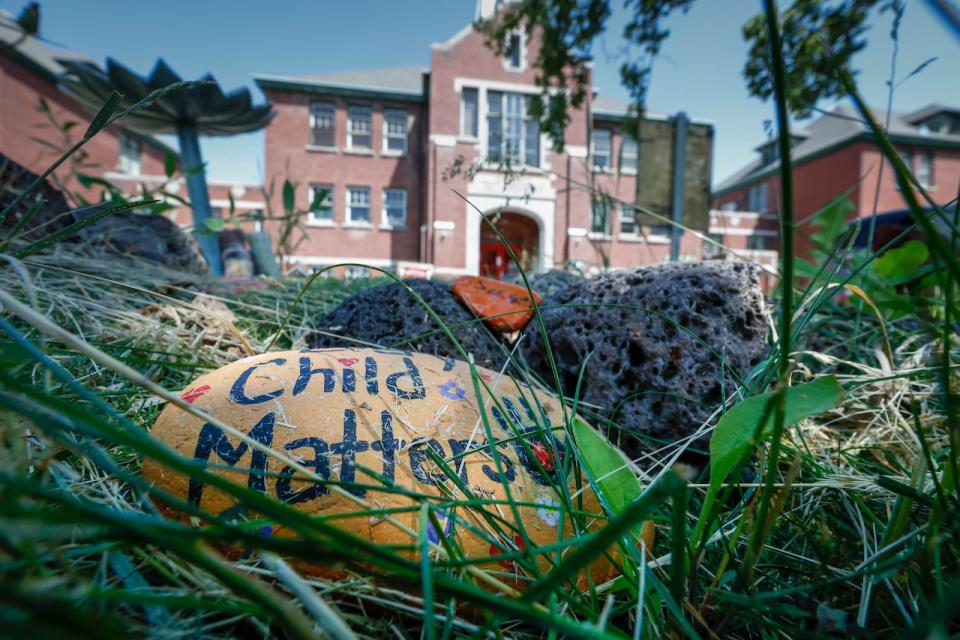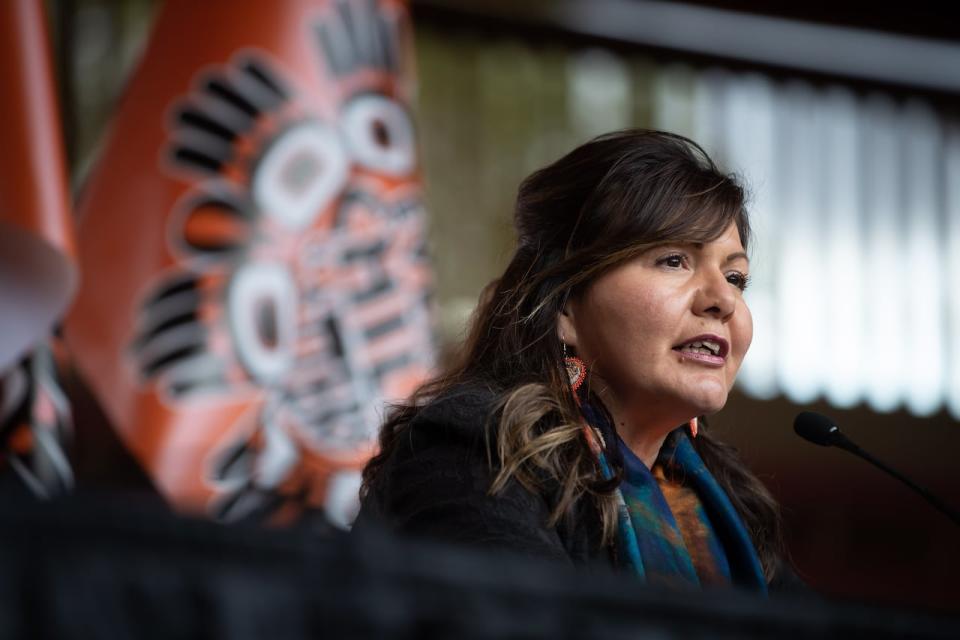First Nation, Catholic Church agree on residential school truths
WARNING: This story contains details of experiences at residential schools.
Tk̓emlúps te Secwépemc and the Vancouver and Kamloops arms of the Catholic Church have released the details of a signed document agreeing to a historical record acknowledging the harms caused by residential schools and the role the church played.
On Easter Sunday, the Roman Catholic Archdiocese of Vancouver, Diocese of Kamloops and the First Nation gathered to sign a Sacred Covenant outlining how it will work with the First Nation toward reconciliation.
"The signing of this sacred covenant is a step in the right direction," Tk̓emlúps te Secwépemc Kúkpi7 Rosanne Casimir said during a news conference on Wednesday.
"We all need to rebuild our relationships at every level and walk this journey together."
Archbishop J. Michael Miller said the church intends to work with Tk̓emlúps te Secwépemc on a path to healing.
Agreed upon truth
The largest part of the Sacred Covenant is a set of agreed-upon truths about the history of the institution.
The covenant reads:
"The Catholic Church now recognizes that the consequences of Indian Residential Schools were profoundly negative and have had a lasting and damaging effect on Aboriginal culture, heritage, and language. While some former students have spoken positively about their experience at the Kamloops Indian Residential School, these stories are overshadowed by tragic accounts of the emotional, physical, and sexual abuse and neglect of helpless children, and their separation from their families and communities, including Secwepemc, Sylix, Nlaka'pamux, and St'át'imc Nations."
Additionally, it says that regardless of what comes to light in the future, the Catholic parties agree that separating children from their families was harmful and "violates Catholic social teaching."

The covenant also contains a commitment from both parties to take further action to honour those truths and reconciliation, including memorials for children forced to attend residential schools, mental health support and collaboration on the ongoing investigation into what happened at the institution.
This comes after Tk'emlúps te Secwépemc First Nation shared that preliminary findings from a ground-penetrating radar survey found what is described as some 200 potential burial sites on the grounds of the former Kamloops Indian Residential School in May 2021.
"Elders and survivors have always spoken of children dying and disappearing while at the school," Casimir said.

Residential schools were often underfunded and overcrowded, and according to the National Commission for Truth and Reconciliation (NCTR), the education offered was poor.
Children forced to attend residential schools were punished for speaking their own languages and engaging in other cultural practices, the NCTR says. Many suffered verbal, physical and sexual abuse at the hands of staff and other students.
"The schools hurt the children," the NCTR says on its website.
"Children were deprived of healthy examples of love and respect. The distinct cultures, traditions, languages, and knowledge systems of First Nations, Inuit and Métis peoples were eroded by forced assimilation."
The Kamloops Indian Residential School was in operation from 1890 to 1969, when the federal government took over administration from the Catholic Church to operate it as a residence for a day school until it closed in 1978.
"The residential school system did do great damage to the language, customs, traditions in this community, and we see the ongoing impact of that today," Miller said.
"The church was wrong in how it complied in implementing a government colonialist policy which resulted in the separation of children from parents and their families."
Template for other agreements
The last action in the covenant is a plan to pass on this work to other First Nations and dioceses.
Both Casimir and Miller are hopeful other Indigenous and Christian communities across the country will establish relationships and take steps toward reconciliation.
"We encourage all Catholics and indeed all Canadians to learn more about the ongoing challenges faced by Indigenous people," Miller said.
Casimir said she believes the covenant sets a precedent for other communities.
"It takes everybody at every level to be walking that path and journey together," she said.
"I would encourage others to also build and establish those relationships, to be able to take those meaningful steps."
A national Indian Residential School Crisis Line is available to provide support for survivors and those affected. People can access emotional and crisis referral services by calling the 24-hour service at 1-866-925-4419.
Mental health counselling and crisis support are also available 24 hours a day, seven days a week, through the Hope for Wellness hotline at 1-855-242-3310 or by online chat.


